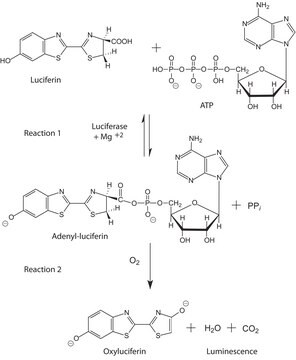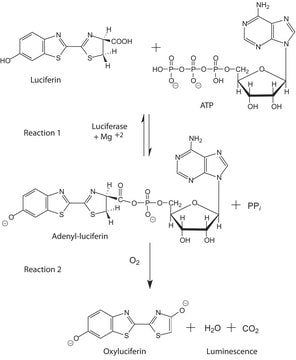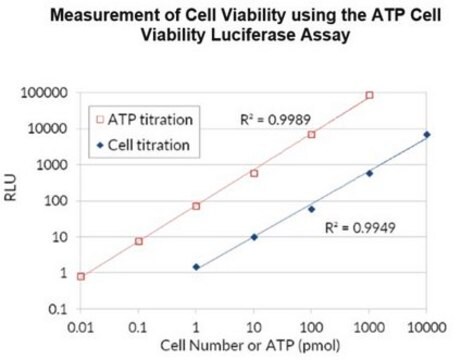119107
ATP Assay Kit
Sinónimos:
Luciferin-Related Kit
About This Item
Productos recomendados
usage
sufficient for 200 tests
Quality Level
manufacturer/tradename
Calbiochem®
storage condition
OK to freeze
avoid repeated freeze/thaw cycles
input
sample type soil
sample type blood
sample type urine
sample type milk
sample type sludge
detection method
chemiluminescent
storage temp.
−70°C
General description
Components
Warning
Specifications
Principle
Preparation Note
Storage and Stability
Legal Information
signalword
Danger
hcodes
Hazard Classifications
Acute Tox. 4 Oral - Aquatic Acute 1 - Aquatic Chronic 2 - Eye Dam. 1 - Skin Irrit. 2 - STOT RE 2 Oral
target_organs
Kidney
Storage Class
10 - Combustible liquids
Certificados de análisis (COA)
Busque Certificados de análisis (COA) introduciendo el número de lote del producto. Los números de lote se encuentran en la etiqueta del producto después de las palabras «Lot» o «Batch»
¿Ya tiene este producto?
Encuentre la documentación para los productos que ha comprado recientemente en la Biblioteca de documentos.
Los clientes también vieron
Nuestro equipo de científicos tiene experiencia en todas las áreas de investigación: Ciencias de la vida, Ciencia de los materiales, Síntesis química, Cromatografía, Analítica y muchas otras.
Póngase en contacto con el Servicio técnico








